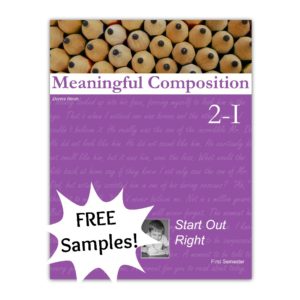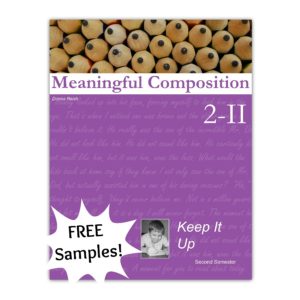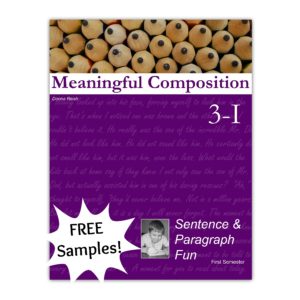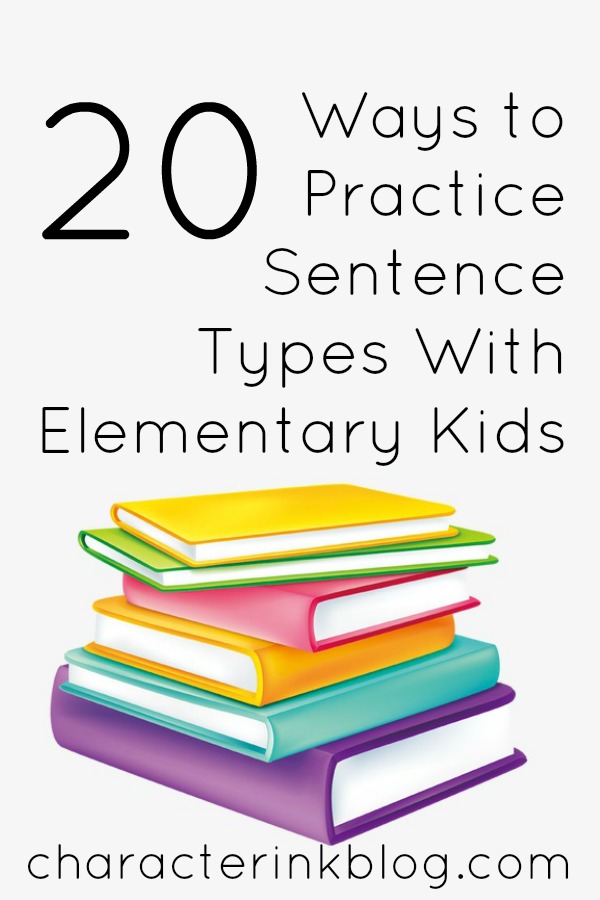
1. Use three key words to introduce sentence types. Sometimes just shortening longer words to their base can make them easier for students to grasp. I like to use the punctuation marks as part of the key word teaching in phrases like these:
a) Declarative–You DECLARE something. Just stating something.
b) Interrogative—Are you a suspect in an INTERROGATION room getting questioned?
c) Exclamatory—You EXCLAIM something in loud words with an exclamation point!
2. Use the graphic below enlarged or create a poster with the key words and samples (emphasizing the ending marks on the samples) and hang up in your classroom when working on three types of sentences.
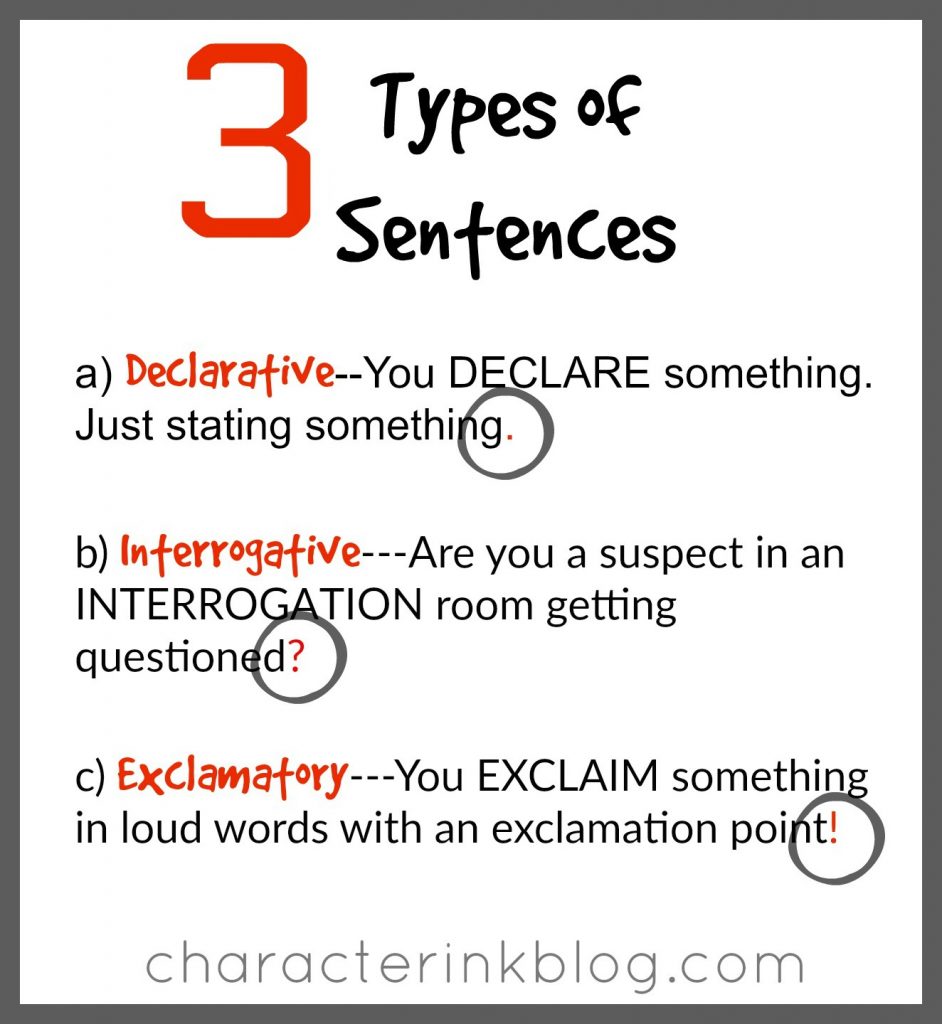
3. Write sentences on cards that are laminated and have students practice putting the punctuation on with wipe off markers.
4. Write sentences on a worksheet for students to add punctuation to.
5. Write lists of sentences that should be changed from one type to another type.
6. Have “Sentence-Type Drills” in which students are to find a certain sentence type in their reader or content area book and read it aloud with the emphasis needed for that type of sentence.
7. Don’t ask students to write the three sentence types. Those words are not in their reading or writing vocabulary. Have them draw lines from those words to the sentence types on the other column or write D, I, E….and especially have them put the punctuation marks in the sentences.
8. Bring a Clue game out to use the characters or “weapons” for asking “Interrogative” sentences to each other.
9. Write instances in which a person would EXCLAIM something on cards and have students draw one and state an exclamatory sentence. Write these sentences on the board for them to see them written with the proper punctuation. (These could be yelling over loud music at a concert, calling out to a small child in danger, shouting surprise at a birthday party, etc.)
10. Write a short story containing all three types of sentences. Cut the sentences up into strips. Break students into small groups. Have them put the sentences in order for the story. Then have them read the story aloud, emphasizing the sentence types when they fall.
11. Have sentences on cards all around the room with removable end marks. Each day move the end marks around in the wrong places and have students put them all in the correct places.
12. Have sentences all over the room that need end marks added (cards, sentences on board, posterettes, etc.) and let students add with a white board marker.
13. Have students work in pairs to match the first half of a sentence with the end of it …helping them focus on key words at the beginning that help them know it is likely a question or exclamatory sentence.
14. Memory game with larger cards for unpunctuated sentences and smaller cards for end marks.
15. “Fishing” with a pole and string that has a magnet on the end. They fish a large card (magnetized) and a small card (punctuation mark). When they get a matching pair, they keep it. Winner is the one who has the most at the end of the game.
16. Finish the sentences with the rest of the sentence and its end mark. This can be done in worksheet form, on the board with students orally finishing the sentence and the teacher writing the rest (as well as the punctuation mark needed), or having students do it at the board one at a time.
17. Use picture cards to elicit oral sentences from students. Orally say a sentence about a picture and say what your end mark will be or which kind of sentence it is
18. Use Boogie boards or white boards. All students write a sentence with no end mark and pass them to the left. Students say the sentence and what end mark they added aloud. Erase the boards and do it again, continuing passing.
19. Draw a question word card (who, what, when, where, why, do, are, will, how, etc.) and students orally give a sentence that begins with that card and ends with a question mark. Again, this can all be oral work or can be combined with board work or writing on paper (depending on level).
20. Use magnetic words to have them create the three types of sentences with their end marks.
For more sentence teaching help, check out my four elementary Meaningful Composition books:
(To see the article about my theory of teaching three sentence types, check out my recent article HERE!)
Love and hope,
Donna


